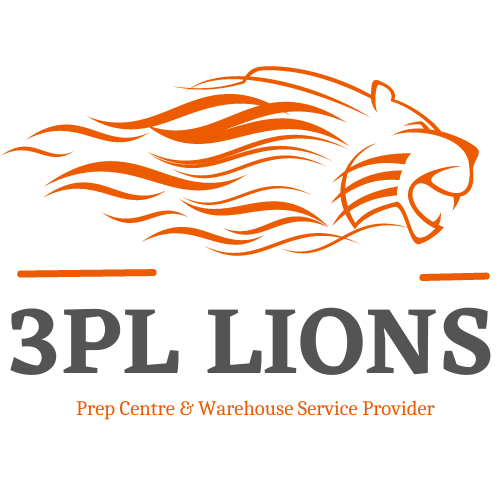Third-party logistics (3PL) involves outsourcing logistics and supply chain management functions to external service providers. This guide will help you understand how to choose the right 3PL partner for your business. While growth brings opportunities, it also introduces challenges, particularly when it comes to scaling logistics, shipping, and fulfillment.
If you’re expanding your ecommerce business, you’ve likely encountered these challenges firsthand. It’s tough to focus on marketing, product development, and customer relationships when you’re bogged down with shipping contracts and logistical issues.
As the ecommerce market has surged, so has the demand for 3PL services, with the industry expected to reach $1.59 trillion by 2028. These logistics experts store your inventory, pick, pack, and ship products to your customers, making them an invaluable asset to businesses across various industries.
Whether you’re partnering with a 3PL for the first time or considering multiple providers to diversify your logistics strategy, this guide will equip you with the knowledge needed to make an informed decision.
What is Third-Party Logistics (3PL)?
Third-party logistics (3PL) refers to the practice of outsourcing logistics and supply chain functions to external providers. These services can include warehousing, transportation, inventory management, and order fulfillment. By partnering with a 3PL, businesses can streamline operations, reduce costs, and focus on their core competencies.
Instead of managing your own warehouses and handling distribution in-house, your stock is stored in a 3PL vendor’s warehouse and shipped directly from your manufacturers. When a customer places an order online, the item is automatically shipped from the 3PL’s warehouse. This seamless process allows ecommerce merchants to concentrate on what they do best—developing, marketing, and selling products—without worrying about the logistical details.
For many ecommerce businesses, 3PLs have been—and will continue to be—a crucial element in overcoming challenges like supply chain disruptions. With global events like political instability, natural disasters, and human resource shortages causing frequent and severe disruptions, partnering with a reliable 3PL can be a game-changer.
How Does 3PL Work?
While the specifics of the 3PL fulfillment process can vary depending on the provider and services agreed upon, the typical process generally follows these steps:
- The 3PL receives and organizes your inventory at their warehouse.
- When an order is placed on your ecommerce site, it is either manually forwarded to the 3PL or automatically integrated through software.
- A warehouse team member picks the items listed in the order.
- The items are packed, along with the receipt and order details.
- The 3PL prints the shipping label or uses a partnered shipping carrier.
- The package is collected from the 3PL’s distribution center and delivered to your customer.
- Tracking information is updated and synced with your order management software.

Understanding the Differences: 2PL, 3PL, 4PL, and Freight Brokers
- 2PL: Couriers collect parcels from your warehouse and deliver them directly to customers.
- 3PL: Inventory is stored, picked, packed, and shipped by a third-party company.
- 4PL: Providers manage the fulfillment partners (3PLs) on your behalf, handling contracts, resolving issues, and communicating between your team and the distributor.
- Freight Brokers: Act as intermediaries between brands and carriers, matching up brands with drivers or carriers but not providing the full range of logistics services that 3PLs offer.
Common Myths and Misconceptions About 3PLs
- “You lose control when you work with a 3PL.”
- It’s true that your inventory won’t be immediately accessible, which can be unsettling at first. However, outsourcing to a 3PL actually allows you to regain control by reducing the likelihood of errors and giving you access to detailed reports and analytics to manage the process remotely.
- “3PLs are only for large businesses.”
- This is a misconception. 3PLs are suitable for businesses of all sizes, particularly those planning to scale. Outsourcing logistics can reduce overhead costs and free up capital, making it a cost-effective solution for growing businesses.
- “3PLs have too many hidden fees.”
- While 3PL pricing can be complex, including costs like inbound, storage, outbound, customs, and packaging fees, these costs are not hidden. They are transparent and outlined clearly if you know the right questions to ask when negotiating your contract.
Why Do Companies Choose to Work with a 3PL?
Outsourcing logistics to a 3PL might seem like an expensive solution, but it’s often more cost-effective than managing fulfillment in-house, especially as your business grows. Here are some reasons why companies choose to partner with a 3PL:
- Scalability: Handling a surge in orders due to a flash sale or viral product can be overwhelming. A 3PL can help manage these spikes without compromising fulfillment promises to customers.
- Storage Space: If you’re running out of storage space, a 3PL can offer a more cost-effective solution by bundling storage with fulfillment services.
- Infrastructure: If your current setup can’t handle a sustained increase in demand, outsourcing to a 3PL can be more efficient than investing in additional infrastructure or hiring more staff.
Benefits of Working with a 3PL
- Market Expansion: Easily test and launch in new markets without the need for additional infrastructure.
- Capital Efficiency: Free up capital tied up in warehouse space and reduce overhead costs.
- Resilience: Insulate your business against supply chain disruptions by leveraging the expertise of logistics professionals.
Outsourcing logistics to a 3PL allows you to focus on your core business while the experts handle the complexities of shipping and fulfillment.

